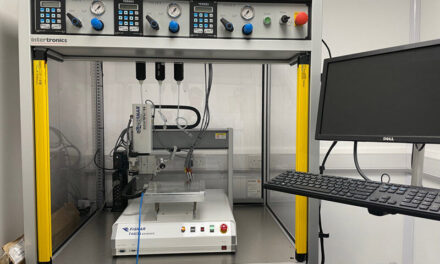 For machine builders, digital technologies have been part of the game for decades. CAD terminals have usurped drawing boards in design offices. Control logic is implemented in PCs or PLCs.
For machine builders, digital technologies have been part of the game for decades. CAD terminals have usurped drawing boards in design offices. Control logic is implemented in PCs or PLCs.
These changes have helped machine makers to work faster and more efficiently.
But different technologies have matured at varied rates and competing standards have emerged. Customers’ attitudes to digital have varied, leading to differing levels of demand for the features and capabilities on offer.
The net result: a complex and fragmented landscape that means machine builders aren’t capturing the full value of digitisation for themselves, or for their customers. CAD models barely leave the design office, never re-used, or updated once production of the machine begins. Design processes are rigidly sequential, with work on control systems and programming not beginning until physical design is complete.
Time to reboot
In recent years, the digital tools, and technologies available to machine builders have advanced dramatically in maturity, capability, interoperability, and ease-of-use.
 At the concept stage in the creation of a new machine, design teams continually ask themselves whether features can be delivered using software rather than hardware.
At the concept stage in the creation of a new machine, design teams continually ask themselves whether features can be delivered using software rather than hardware.
Software control can reduce the number of parts required to achieve complex motion, for example, or it can allow custom-made parts to be replaced by standard off-the-shelf components.
Machines with software-adjustable settings can offer greater flexibility in operation too. Users can benefit from faster changeovers, allowing them to reduce batch sizes and increase productive time. And software adjustability is a vital foundation for advanced capabilities such as automated tuning algorithms that optimise machine performance under real-time closed-loop control.
At the design stage. Mechanical designers and software specialists work together in close-knit teams. Their objectives include seamless integration of digital physical features, cost optimisation, and the management of complexity. They achieve those goals by standardising wherever they can.
Digital-first machine design can transform customer relationships too. Once a sales engineer has spent time with the customer to learn what they need, they can work with their design colleagues to develop a solution using pre-existing modules wherever possible. They can then present that concept to the customer as a simulation, with evidence that the proposed design will meet their requirements.
![]() A comprehensive digital model will also streamline production, installation, and commissioning. Manufacturing teams can be confident that a machine will work as designed, because most problems have already been ironed-out in simulation. Logistics teams can check that components are suitable for transport. Installation engineers can be confident that everything will reassemble correctly on site. And systems integration engineers can verify hardware and software interfaces in advance of commissioning on-site.
A comprehensive digital model will also streamline production, installation, and commissioning. Manufacturing teams can be confident that a machine will work as designed, because most problems have already been ironed-out in simulation. Logistics teams can check that components are suitable for transport. Installation engineers can be confident that everything will reassemble correctly on site. And systems integration engineers can verify hardware and software interfaces in advance of commissioning on-site.
Digital for life
The benefits of digital-first machine building don’t stop when a completed machine is in service with the customer. Implementing a two-way link between the real machine and its digital representation transforms a model into a digital twin. This opens a host of possibilities, including on-line condition-monitoring, advanced remote diagnostics, and continuous improvement of machine reliability and performance via software updates delivered over the Internet.
Customers benefit from access to machine-specific expertise that would be difficult or prohibitively expensive to support in-house.
Machine builders can use digital services to differentiate themselves from competitors and access sources of recurring revenues from their customers.
The components of the digital revolution
As a leading supplier of industrial automation solutions, Lenze is fully committed to the digital revolution in machine building. We’ve been working in this area for more than three quarters of a century.
 Today, every part of the Lenze offering is designed to perform in a digital-first environment. That starts at the component level of things, like offering digital models of our motion products for easy integration into customers’ design software. Or ensuring that our drives and control products are compatible with a wide range of industry-standard communication protocols.
Today, every part of the Lenze offering is designed to perform in a digital-first environment. That starts at the component level of things, like offering digital models of our motion products for easy integration into customers’ design software. Or ensuring that our drives and control products are compatible with a wide range of industry-standard communication protocols.
Our innovative approach to software is designed to save time, simplify support, and maximise code reuse. Lenze’s FAST system, for example, provides machine builders with easily adaptable code templates for common motion tasks. This can reduce the time required to develop and debug a machine application by up to 80 percent.
Our NUPANO open automation platform bridges the gap between the operational technology (OT) world of drives and automation, and the IT world of apps, artificial intelligence, and data analytics.
NUPANO offers machine builders the flexibility to develop and deploy apps created in any language. And it ensures total control, even in the most complex environments. With NUPANO, machine builders can maintain a precise digital record of the configuration of every machine in service. Upgrades, updates, and improvements can be deployed at the touch of a button, always to the right machines at the right time, using a secure internet gateway.

